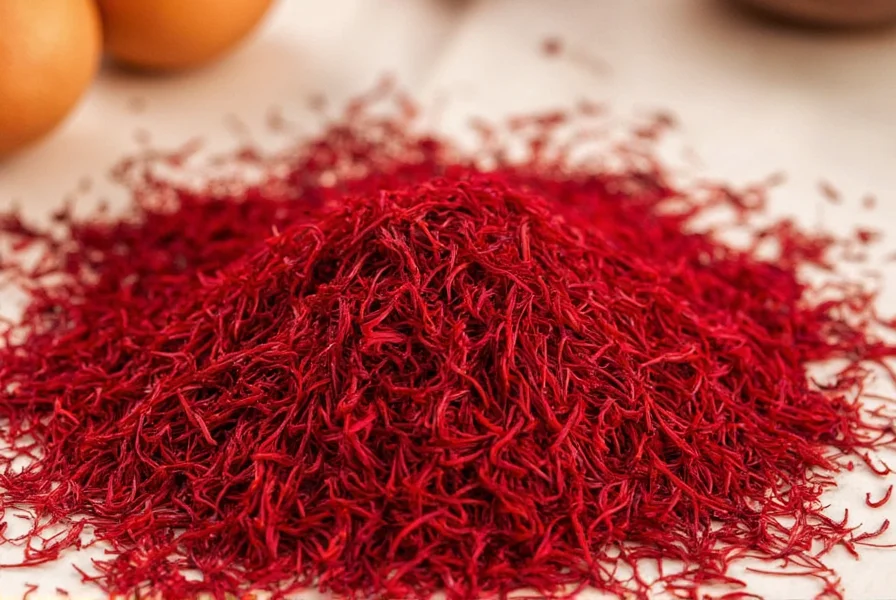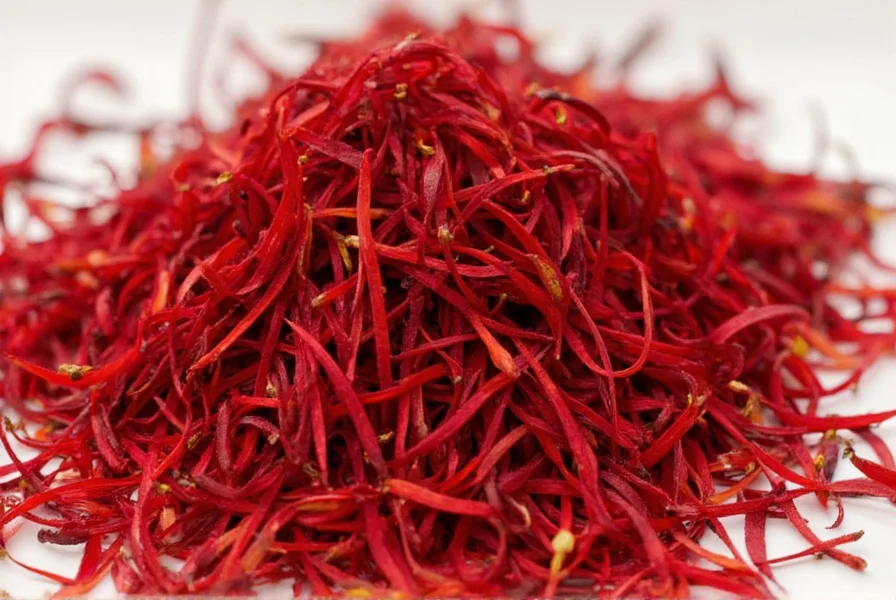When exploring the realm of luxury ingredients, few categories fascinate culinary enthusiasts and economists alike as much as the world's most expensive spices. These precious flavorings represent the pinnacle of agricultural rarity, labor intensity, and historical significance in global trade. Understanding why certain spices command extraordinary prices reveals fascinating stories of human endeavor, geographical constraints, and centuries-old traditions that continue to influence modern markets.
The World's Top 5 Most Expensive Spices
While spice prices fluctuate based on harvest quality, geopolitical factors, and market demand, certain spices consistently rank at the top of the luxury spice hierarchy. Here's a comprehensive ranking of the most valuable spices by current market value:
| Spice | Price Per Pound | Price Per Gram | Primary Growing Regions |
|---|---|---|---|
| Saffron | $500-$5,000 | $1.10-$11.00 | Iran, Spain, Kashmir, Greece |
| Vanilla | $200-$600 | $0.44-$1.32 | Madagascar, Mexico, Tahiti |
| Cardamom | $30-$100 | $0.07-$0.22 | Guatemala, India, Tanzania |
| Sumac | $25-$50 | $0.06-$0.11 | Middle East, Mediterranean |
| Ceylon Cinnamon | $20-$40 | $0.04-$0.09 | Sri Lanka, India |
Why Saffron Maintains Its Crown as the Priciest Spice
Saffron's extraordinary cost stems from an exceptionally labor-intensive production process that hasn't significantly changed in centuries. Each Crocus sativus flower produces only three delicate red stigmas, which must be hand-picked at dawn when the flowers are still closed to preserve quality. Harvesters require approximately 40 hours of meticulous work to gather 150,000 flowers needed for just one pound of dried saffron.
The geographical limitations further constrain supply. While saffron cultivation has spread globally, the highest quality saffron still comes from specific microclimates in Iran (which produces over 90% of the world's supply), Kashmir, and parts of Spain. Climate change increasingly threatens these delicate growing conditions, causing price volatility in recent years.
Quality grading significantly impacts saffron pricing. The ISO 3632 standard categorizes saffron into four quality tiers based on crocin (color), picrocrocin (taste), and safranal (aroma) content. Category I saffron, with the highest concentration of these compounds, commands premium prices for its intense coloring power and complex flavor profile that cannot be replicated by substitutes.

The Economic Factors Behind Premium Spice Pricing
Several interconnected factors determine why certain spices reach extraordinary price points in global markets:
Labor Requirements vs. Yield
Spices like vanilla demonstrate the extreme labor-to-yield ratio that drives costs. Each vanilla orchid flower must be hand-pollinated within a 24-hour window, then cured for several months through a meticulous process of sweating, drying, and conditioning. It takes approximately 300 flowers to produce one pound of vanilla beans, making it the second most expensive spice globally.
Geopolitical and Environmental Vulnerabilities
Madagascar supplies about 80% of the world's vanilla, making the market extremely vulnerable to cyclones, political instability, and theft. In 2018, vanilla prices skyrocketed to $600 per pound due to crop failures and speculative trading, though they've since stabilized at more moderate (though still premium) levels.
Authentication Challenges and Adulteration
The high value of luxury spices creates significant incentives for adulteration. Saffron frequently gets diluted with safflower or marigold petals, while vanilla may be stretched with synthetic vanillin. Authenticating genuine products requires specialized knowledge, laboratory testing, or trusted supply chains, adding to the cost of verified premium products.
Historical Context: Spices That Shaped World History
Today's expensive spices echo historical patterns where certain flavorings were literally worth their weight in gold. During the Middle Ages, black pepper from India was so valuable it served as currency in some regions, while nutmeg and cloves from Indonesia's Maluku Islands commanded prices that funded European colonial expeditions.
The spice trade routes established centuries ago still influence modern production patterns. Kashmiri saffron, for instance, traces its cultivation to Persian traders who introduced it to the region in the 1st century BCE. Understanding this historical context helps explain why certain regions maintain dominance in producing specific high-value spices despite global cultivation efforts.
Practical Guidance for Using Premium Spices
When working with expensive spices, maximizing value while maintaining quality requires specific techniques:
- Proper storage: Keep saffron and vanilla in airtight containers away from light and moisture to preserve potency for up to two years
- Optimal usage: Toast whole spices before grinding to release maximum flavor compounds without degradation
- Measurement precision: Use scales measuring to 0.01g for saffron to avoid waste while achieving desired color and flavor
- Extraction techniques: Steep saffron threads in warm liquid for 20 minutes rather than adding directly to dishes

For home cooks exploring expensive spices, starting with small quantities of mid-range quality products provides the best balance of value and experience. Premium saffron's distinctive honey-like aroma and complex flavor profile justify its cost in specific applications like paella, bouillabaisse, or Persian rice dishes where substitution would compromise authenticity.
Emerging Trends in Luxury Spice Markets
Modern agricultural innovations are beginning to influence traditional spice production. Hydroponic saffron cultivation shows promise for increasing yields while maintaining quality, though it remains experimental. Similarly, biotechnology approaches to vanilla production using yeast fermentation could potentially stabilize supply, though purists argue these methods lack the nuanced flavor of naturally pollinated orchids.
As consumer awareness grows about ethical sourcing and fair compensation for harvesters, premium pricing increasingly reflects not just rarity but also sustainable practices and equitable labor conditions. This shift toward valuing the human element in spice production represents a significant evolution in how we assess the true cost of these culinary treasures.
Frequently Asked Questions
Why is saffron more expensive than gold by weight?
Saffron's price exceeds gold by weight due to its extremely labor-intensive harvesting process. It takes approximately 75,000 crocus flowers to produce just one pound of saffron threads, with each flower containing only three usable stigmas that must be hand-picked at dawn. The limited growing regions and climate vulnerability further constrain supply, creating extraordinary production costs that drive the premium price.
How can consumers verify authentic saffron versus adulterated products?
Authentic saffron verification involves several tests: genuine threads should release a rich golden-yellow color (not red) when steeped in warm water, have a distinctive honey-like aroma with hay notes, and feel slightly moist to the touch. The ISO 3632 certification provides quality assurance, while laboratory testing measures crocin content. Reputable suppliers typically provide documentation about origin and quality grading.
What's the difference between regular cinnamon and expensive Ceylon cinnamon?
Ceylon cinnamon (true cinnamon) comes from Sri Lanka and has multiple thin, delicate layers that form a tight scroll, with a lighter brown color and complex, citrusy flavor. Regular cinnamon (Cassia) is darker, forms a single thick scroll, and has a stronger, more pungent flavor with higher coumarin content. Ceylon commands higher prices due to more limited production, superior flavor profile for delicate dishes, and lower coumarin levels making it safer for regular consumption.
Does the high price of premium spices translate to significantly better flavor?
Yes, premium spice grades deliver noticeably superior flavor, aroma, and coloring properties. Top-grade saffron (Category I) contains 30% more crocin than lower grades, resulting in dramatically better coloring power. Similarly, Grade A vanilla beans have higher moisture content and vanillin concentration, producing a richer, more complex flavor profile. The difference becomes particularly apparent in delicate dishes where the spice is a featured ingredient rather than a background note.
Are expensive spices worth the cost for home cooking?
For signature dishes where the spice is central to authenticity, premium spices are often worth the investment. A small amount of high-quality saffron transforms paella or risotto in ways imitation simply cannot match. However, for dishes where spices play a supporting role or get cooked extensively, mid-range quality products offer better value. The key is understanding which dishes truly benefit from premium ingredients and using precise measurements to maximize value without waste.











 浙公网安备
33010002000092号
浙公网安备
33010002000092号 浙B2-20120091-4
浙B2-20120091-4